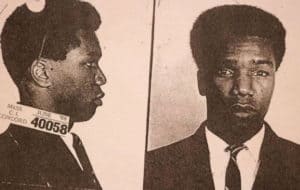For Nearly 50 Years, Harvard Was Haunted by an Unsolved Murder. DNA Now Points to a Serial Rapist
Kyle Swenson, Washington Post, November 26, 2018
It is a winter-swept afternoon in January 1969, the thermometer dangling in the mid-30s in Cambridge, Massachusetts. A Harvard University graduate student named James Humphries hustles up the stairs to the top floor of an apartment building two blocks from Harvard Square.
His friend and classmate, Jane Britton, was a no-show at an important exam that morning. The phone just rang and rang when he called to check in, a police report would later document. {snip}
It was not like Britton to skip a test. {snip} Two years into her post-grad work, the 23-year-old had recently returned from an archaeological dig in Iran. {snip}

Jane Britton
Humphries steps into the apartment, the walls swirling with pictures of elephants and giraffes Britton painted herself, the air spiked with the smell of the three packs of French cigarettes she smoked each day. He finds her face down on her bed, a light blue nightgown pulled up to her bloody head. Police later determined Britton had been sexually assaulted and bludgeoned to death.
The brutal murder of a talented, young Harvard student quickly jumped into the national news, where the cloud cover of speculation and rumor made it difficult to see fact from fiction. The Harvard Square counterculture scene, the infamous Boston Strangler case, a bizarre death rite tied to Britton’s anthropological work — all were floated as possible explanations.
{snip}
Last week, the Middlesex County District Attorney announced new DNA testing had conclusively linked Britton’s murder to a now-deceased convicted rapist named Michael Sumpter. {snip}
{snip}
The case highlights the power of advanced techniques to definitively shut long-unsolved cases. {snip} According to Middlesex County, Sumpter has been connected with five sexual assaults, including three murders.
{snip}
Although some of Britton’s friends said she was a strait-laced student glued to her studies, others told reporters she had a different side.

Michael Sumpter
“She knew a lot of odd people in Cambridge – the hangers-on and acid heads who you would not call young wholesome Harvard and Radcliffe types,” an unnamed friend was quoted as saying in a New York Times article from Jan. 19, 1969. “She went to a lot of their parties and was very kind to them.”
{snip}
In May 1963, Beverly Samans was found stabbed to death in her apartment. Like Britton, she had been a 23-year-old graduate student. She also lived in the same apartment complex where Britton was killed.
A year later, Albert DeSalvo was arrested and confessed to being the Boston Strangler, the serial killer responsible for 13 murders in a two-year spree. Samans was one of his victims, DeSalvo claimed, according to the Boston Globe. But since Britton was murdered in the same building, the new killing fueled rumors the actual Boston Strangler — or a copycat — could still be at large.
{snip}
The Massachusetts State Police Crime Laboratory determined new forensic techniques could pull a Y-STR, or male-specific profile, from the DNA still in evidence. By July of this year, that profile was run through a database of known sex offenders. A match returned to Michael Sumpter.
But Sumpter died of cancer in 2001 at the age of 54, just 13 months after he was paroled from a sentence for a 1975 rape in Boston. Without further genetic testing, investigators could not conclusively link Sumpter to Britton’s murder. But investigators were able to track down the suspect’s living brother, who would have the same Y-STR. The brother provided a sample, and the DNA matched the evidence from the 1969 apartment.
Further legwork connected Sumpter to Britton’s neighborhood. Authorities determined he lived in Cambridge as a child, and also had a girlfriend living in the city in the late 1960s. Two years before Britton’s murder, he worked a mile away from her apartment.
{snip}
In 2002, Sumpter’s DNA was linked to an unsolved 1985 rape in Boston. At the time of the crime, Sumpter had escaped from a work release program, authorities said. In 2010, his forensic evidence was matched to an unsolved 1972 rape and murder of a 23-year-old woman in Boston. Two years later, the same DNA connected him to a 1973 rape and murder of a 24-year-old woman.
{snip}















